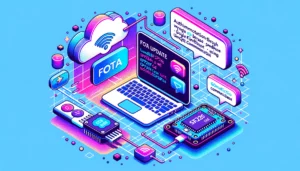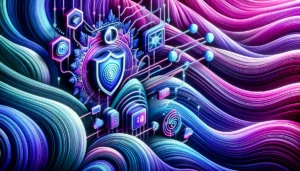Introduction to Edge Computing

Edge Computing is a bit like having a mini-computer right where you need it. Imagine you have a smartwatch that tracks your fitness. If every bit of data from your watch had to be sent far away to a big computer to be understood, it might take a long time for you to see your results. Edge Computing lets your watch do some of that thinking on its own, so you get information faster.
How Edge Computing Works
Imagine you’re in a big city, and you want to mail a letter to a friend who lives in the same city. Instead of sending that letter to another country to be sorted and then sent back, you would mail it directly within your city. That’s kind of how Edge Computing works.
With traditional computing, data from your devices (like phones, cameras, or machines in a factory) has to travel far away to big, powerful computers (data centers) to be processed. This can take time and use a lot of energy.
Edge Computing puts smaller computers (called edge devices) closer to where the data is being created. So, instead of sending all that information far away, it can be worked on right there. This means things happen faster, and it uses less energy.
How Edge Computing Contributes to IoT Systems
Now, let’s talk about the Internet of Things, or IoT. IoT is a big network of devices that can talk to each other over the internet, like smart fridges, thermostats, or even cars.
Edge Computing helps IoT in some really cool ways:
- Faster Responses – By working on data closer to where it’s created, things happen more quickly. This can make your smart devices respond faster.
- Saving Money and Energy – Since the data doesn’t have to travel far, it can save energy and costs.
- Working Even When Offline – If the internet goes down, edge devices can still work on the data. Your smart home system can keep working even if it loses connection for a while.
- Better Privacy – Processing data closer to where it’s created can make it more private and secure.
Edge Computing is like a helpful friend to IoT, making things work better, faster, and more efficiently. It’s an exciting idea that’s helping to make our world smarter and more connected.
Challenges and Solutions in Edge Computing
Like anything new and exciting, Edge Computing in IoT isn’t without its challenges. Some people worry about the cost of setting up all these mini-computers close to the devices. Others might be concerned about how safe and secure the information is. Thankfully, companies are finding ways to make Edge Computing more affordable and secure. By working together, they are creating solutions to these problems, making it easier for more people to benefit from this great technology.
Real-World Applications of Edge Computing in IoT
You might be surprised to find out that Edge Computing is already being used in our daily lives. Here are a few examples:
- In healthcare, Edge Computing helps doctors and nurses quickly get patient information, so they can provide better care.
- In cities, traffic lights and sensors can use Edge Computing to help reduce traffic jams.
- Factories use it to monitor machines and make sure they are working correctly, saving time and money.
Future of Edge Computing in IoT
Edge Computing is like a star on the rise. As technology gets better, we can expect even more exciting things from it. In the future, we might see faster and smarter devices, better security, and even new inventions that we haven’t thought of yet! The sky is the limit when it comes to what Edge Computing could do for IoT.
Security Concerns in Edge Computing
While Edge Computing is great, we must be careful with the information we send and receive. Making sure that this information is safe and private is very important. Cybersecurity experts are working hard to make sure that the information processed at the edge is secure. By using strong protection and being careful with who can access the information, Edge Computing can be both powerful and safe.
Comparison with Cloud Computing
Edge Computing and Cloud Computing are like cousins. They both help process information, but they do it in different ways. While Cloud Computing sends information to big computers far away, Edge Computing works on it closer to home. This can make Edge Computing faster and sometimes better for certain jobs, while Cloud Computing might be better for other things.
Technical Aspects of Edge Computing
For those who like to know how things work, the technical side of Edge Computing is fascinating. It uses smaller computers that are closer to the devices, special software to manage the information, and clever ways to make sure everything runs smoothly. It’s like a well-orchestrated dance, with each part working together in harmony.
Environmental Impact of Edge Computing
Did you know that Edge Computing could also be good for our planet? By processing information closer to where it’s created, it uses less energy. This could help reduce pollution and make our world a little greener.
Case Studies and Success Stories
There are many companies and projects that have used Edge Computing in IoT to do amazing things. From helping farmers grow better crops to making factories more efficient, the success stories are inspiring and show what’s possible when we use technology in smart ways.
Conclusion
Edge Computing in IoT is a powerful tool that’s shaping our world. With its ability to make things faster, smarter, and more eco-friendly, it’s an exciting area that holds a lot of promise for the future.










